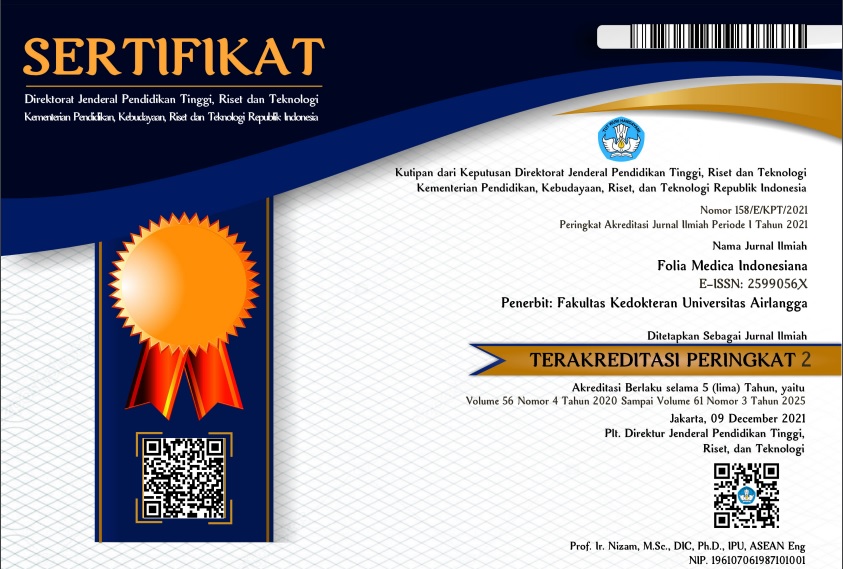Abstract
Children of primary school are particularly vulnerable to schistosomiasis because 60-70% of them with age of 5-14 years do a lot of activity outside home. The impact of schistosomiasis in children are the lack of concentration in learning, anemia, and impaired growth. This study aimed to describe the behavior of children aged 7-12 years in Puro'o and Tomado Villages in preventing the transmission of schistosomiasis and to determine the correlation between age, sex behavior community in the prevention of schistosomiasis. The study was conducted in Tomado and Puro'o villages for 3 months from March to June 2016. This was a cross sectional study. The samples in this study were children aged 7-12 years, selected by stratified multistage random cluster sampling which was done in three phases: the first phase was the villages, the second phase was the primary school in the village, and the third stage was household selected by proportional random sampling. Data were collected through interview using a structured questionnaire and the observation was analyzed using chi-square test. Respondents who had less knowledge, mostly behave defecate/urinate (80%) in latrine/WC, handwashing behavior with soap after defecating/urinating (50%), wearing footwear outside the home (86.5%), and playing in the rice fields, marshes and lakes (67.3%). Analysis of the relationship between knowledge and child's behavior showed no significant relationship (p=0.114). As a conclusion, children aged 7-12 years in Tomado and Puro'o villages mostly had less supportive behavior in preventing the transmission of schistosomiasis and had moderate or less reliable knowledge.
Keywords
Children aged 7-12 years, schistosomiasis, risk factors
First Page
141
Last Page
145
DOI
10.20473/fmi.v54i2.8865
Publication Date
7-5-2018
Recommended Citation
Sulistiyawati, Tri; Utomo, Budi; and Soeharto, Soeharto
(2018)
"Risk Factors of Children Behavior in Schistosomythical Transfer in Two Villages of Lindu Regency, Sigi District, Central Sulawesi in 2017,"
Folia Medica Indonesiana: Vol. 54:
No.
2, Article 11.
DOI: 10.20473/fmi.v54i2.8865
Available at:
https://scholarly.unair.ac.id/fk-fmi/vol54/iss2/11






